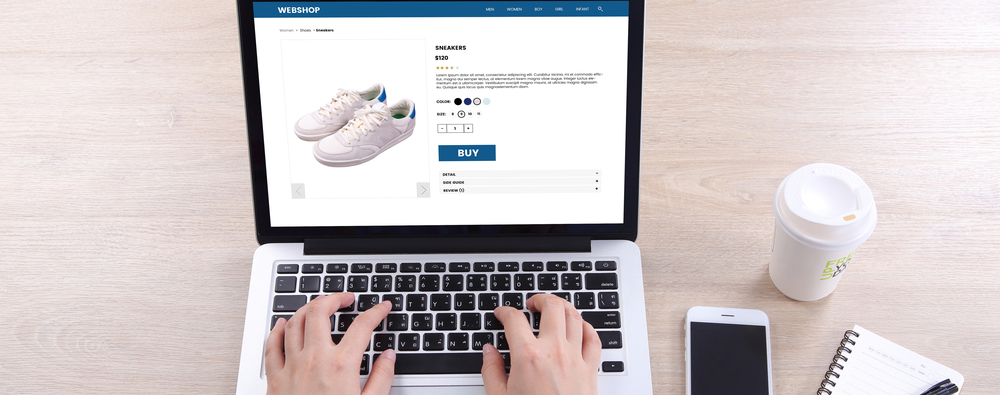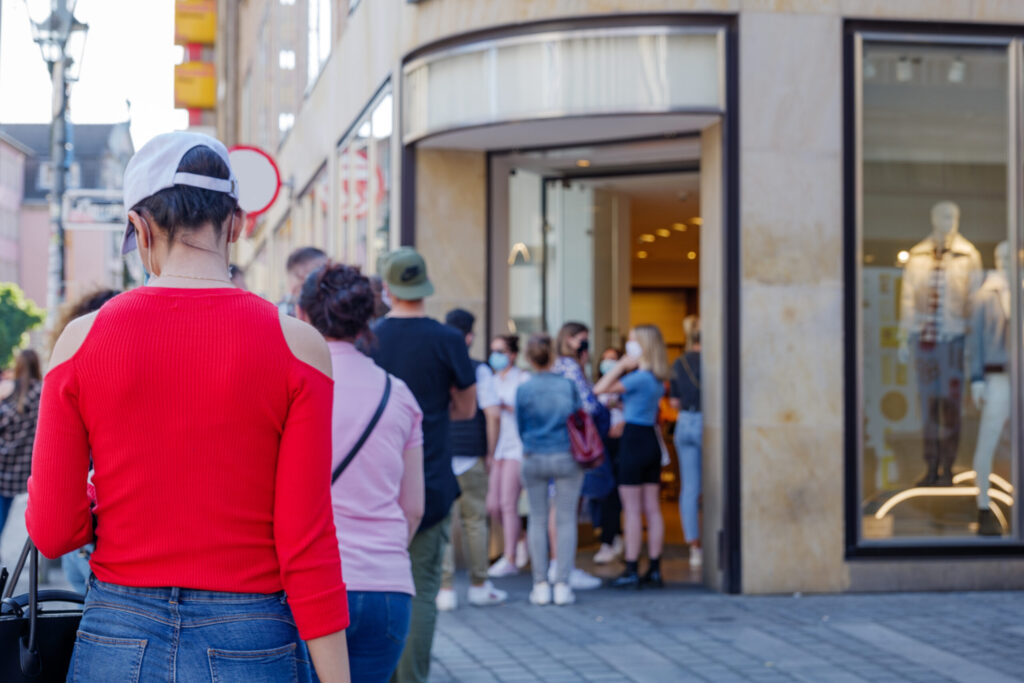Product drops are effective sales and marketing strategies for driving engagement and revenue. In fact, 66% of surveyed fashion brands and 78% of footwear brands say product drops are an important part of their business.
In an era when consumer behaviour is more volatile than ever before, product drops can serve as an important way to create awareness, a sense of urgency and brand loyalty — but only when they are executed properly.
To successfully execute the event, brands must understand how to choose the right products, build hype and invest in the right technology to support the product drop.
In this article, we will discuss what a product drop is, the benefits of the model and four key strategies to help brands successfully add product drops to their sales and marketing strategy.
Product Drop Basics
A product drop, also known as a product release or launch, is a strategic marketing event used by brands to introduce a new product. This can encompass a wide range of items, including sneakers, luxury apparel, limited-edition perfume and tech gadgets. The term “drop” was originally coined by fashion and streetwear consumer brands that generated anticipation by announcing a specific date and time for the product’s availability. However, the term is now widely used across industries, including baby pajama brands, skateboard companies and more.
According to a PYMNTS survey, 43% of consumers have participated in product drops within the past month. These numbers are even higher for younger consumers, with 60% of Millennials and Gen-Z saying they participated in a product drop within the past month.
Product drops are specifically orchestrated to build excitement and demand. These events can lead to a frenzy, with customers lining up at brick and mortar stores and rushing to websites to secure the coveted product. In essence, a product drop is a way for businesses to capture attention, engage their audience and stay competitive in an ever-evolving consumer market. It is a blend of marketing, hype and consumer psychology designed to drive sales and brand loyalty.
Benefits of Product Drops
When executed properly, product drops act as a powerful marketing and DTC strategy that drives sales, builds customer loyalty and helps brands maintain a competitive edge. Because they revolve around a specific release date and time, they can help create a deep sense of urgency, which motivates customers to act quickly. This can lead to increased revenue, media coverage, social media engagement and greater brand visibility overall.
Product drops can increase brand affinity among consumers by up to 72%, boosting satisfaction and giving them access to hard-to-find items to higher-quality products. Similarly, more than half of consumers who participate in product drops and similar sales events say they would be highly interested in future product drops.
Product Drop Strategies

To run a successful product drop, brands must be highly strategic about building hype and preparing their website for the event. They must choose the right products and segment audiences based on consumer data. Timing, marketing and storytelling are of the utmost importance.
Let’s look at four key strategies for a profitable, well-executed product drop.
1. Build Hype
According to Nielsen research, word-of-mouth marketing is still the most trusted form of advertising, followed by branded websites and consumer opinion posted online. This data emphasises the importance of building hype before a product drop. Without it, consumers will lack trust in the brand — or simply will not know the drop is happening.
Here are some strategies brands can leverage to create buzz before a product drop:
- Teaser marketing: Release cryptic hints of sneak peeks to generate curiosity and anticipation.
- Influencer marketing: Expand reach and generate interest by partnering with relevant influencers on TikTok, Instagram, YouTube and other social media channels.
- Strategic timing: Choose a significant date or align with a cultural event to build awareness.
- Engaging storytelling: Use email marketing, social media marketing and ads to release video, audio and graphics that build excitement and connect the product to the brand’s identity.
2. Deploy the Drop with the Right Technology
Many brands spend plenty of time planning a marketing campaign for their product drop. But many also neglect the technology that supports the drop. This grave mistake can lead to website crashes, hacks or security breaches during the event.
If the marketing campaign has been successful, brands can expect a much higher volume of site visitors on drop day. This volume will stress servers and lead to slow load times across the site and product pages. Slow load times or site crashes drive shoppers away.
Products usually sell out during product drops. If a brand’s inventory management system does not display real-time stock levels, they run the risk of overselling. Overselling requires companies to issue refunds and refunds can damage customer loyalty.
To ensure a successful product launch, brands must invest in high-performance hosting platforms, secure systems and real-time inventory management solutions. Investing in the right technology gives shoppers a better experience during the product drop and sets your brand up for success.
3. Choose the Right Products
Not every product is right for the product drop marketing strategy. Forty-five percent of consumers say they participate in product drops because they are looking for items that are difficult to obtain, while 48% say they want access to high-quality products. In short, the best items incite a high level of anticipation or sense of exclusivity.
Here are some product types that are ideal for a product drop event:
- Limited edition products: Limited edition items or unique variations that are not readily available in the market can create a sense of exclusivity and desirability, such as sneakers in a rare colour scheme or one-of-a-kind fashion pieces.
- New release: Products that have already generated significant anticipation among your audience are prime candidates for product drops. This could include the latest tech gadgets, fashion collaborations or collectibles.
- Fan favourite: Do you already have products that are in high demand or have a cult following? If so, these items are poised for a successful product drop event. Products for niche hobbies, gaming or pop culture items could fit into this category and build an engaged audience.
- Seasonal Items: Products tied to specific seasons or events, like holiday merchandise or special collections, can capitalise on consumer interest.
Ultimately, the best product for a drop depends on your target audience, brand positioning and the specific market dynamics at play. It is crucial to research your audience and industry trends to determine the most suitable products for a successful product drop.
4. Segment Audiences
Today’s consumers want a personalised experience, and brands that deliver will reap the benefits. A MailChimp study found that segmented email campaigns have a 14.31% higher open rate than non-segmented campaigns. Personalisation can also produce a 10 to 15% increase in revenue and reduce acquisition costs by up to 50%.
Audience segmentation is also key to success for a product drop event. It helps tailor marketing efforts to the needs of individual consumers. Here are some ways to segment audiences for a more successful event:
- Demographics: Start with basic characteristics like age, gender, location and income.
- Psychographics: Understand your audience’s values, interests and lifestyle. This can help you target specific niches.
- Behavioural data: Analyse past purchasing behaviour, website visits and engagement with your brand. Those who have shown interest in similar products are more likely to be interested in your product drop.
- Engagement level: Segment based on the level of engagement with your brand or past product drops. Reward loyal customers with exclusive early access or discounts
- Channel preferences: Consider where your audience prefers to receive information. Some may respond better to social media, while others prefer email or website notifications.
- Timing: Segment based on time zones and scheduling preferences to ensure your product drop timing aligns with your audience’s availability.
- Feedback and reviews: Use feedback and reviews from previous product drops to identify and target areas of improvement and better meet customer expectations.
By employing these segmentation strategies, you can maximise the impact of your product drop event. By delivering tailored marketing messages to different audience segments, you increase the likelihood of a success.
Host Worry-Free Product Drops
In the competitive ecommerce landscape, product drops have emerged as a powerful tool for brands. Drops allow brands to captivate audiences, build anticipation and increase visibility. However, success hinges on careful planning and strategic execution.
If your brand is looking for tools to support your next product drop, ESW can help. Our solution provides everything needed for your brand’s online channel. This includes targeted specialty stores for product drops, private sales and liquidation. With ESW, brands effortlessly host high-volume, limited product sales and provide a seamless experience. Get in touch today to learn more.





